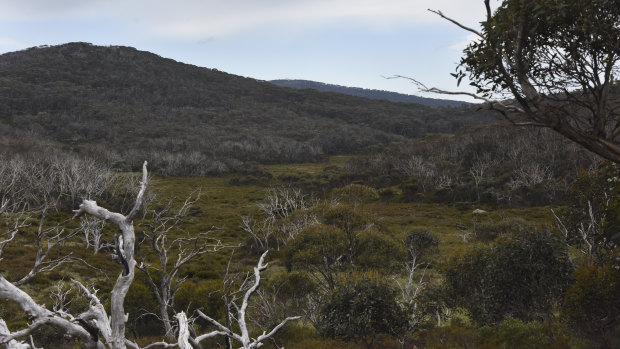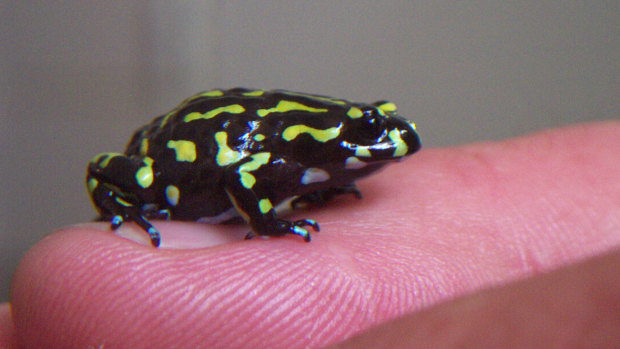By Finbar O'Mallon
The wetlands that provide Canberra with 80 per cent of its drinking water have been declared endangered due to the threat of feral horses across the ACT border.
The ACT government made the announcement on Thursday to help protect the alpine wetlands, which sit along the Brindabella Ranges in Namadgi National Park.
The high-country wetlands provide Canberra with its clean drinking water supply but the delicate bogs - which naturally filter the water - could be devastated by feral horses.

A view of the wetlands in the valley below Mount Gingera in Namadgi National Park.Credit: Finbar O'Mallon
Last year, NSW parliament passed laws which gave feral horses in Kosciuszko National Park cultural heritage status to protect them from lethal means of of population control.
Before that, an independent advisory group had suggested the NSW government reduce the brumbies population from 6000 to 600 with control methods, including aerial culls, over 20 years.
The legislation was spearheaded by NSW deputy premier John Barilaro, the state member for the Monaro electorate, which ranges from Queanbeyan to Jindabyne.
A brumby population estimated between 1000 and 2000 lives just across the ACT border in NSW in the nearby areas of Tantangara and Long Plain.
ACT park rangers have expressed concern that the new NSW laws protecting the pests would allow these population to grow unchecked before spreading into the ACT.
ACT parks manager Brett McNamara said the reason Canberra sits where it does is because of the wetlands in Namadgi.
"It really is the lifeblood of this city," Mr McNamara said.
"As an inland city the size of what we are today: it's absolutely critical that our catchment and the integrity of that catchment is maintained not only for today's generation but also future generations as well."
Mr McNamara said feral horses could be roaming the ACT within five years with their heavy hoofs and appetite for the sphagnum moss which populates the wetlands destroying the delicate bogs.
He said it would be a problem for future generations if the horses in Kosciuszko were allowed to grow unchecked.
"I'm yet to meet a feral horse that can recognise the ACT / NSW border," Mr McNamara said.
ACT government senior ecologist Murray Evans said alpine areas represent only a small proportion the Australian landmass.

The Northern Corroboree frog, native to the Namadgi wetlands, is smaller than a fingernail.
The bogs in Namadgi's alpine wetlands are also home native rats, crustaceans and alpine tree frogs but also the critically endangered northern corroboree frogs.
"If there's no bogs, there's no frogs," Dr Evans said.
Dr Evans said the bogs in Namadgi were already internationally recognised but this new announcement by the ACT government would help prioritise their care.
Listing the wetlands as endangered was made to protect native habitats, wildlife and the capital's water supply, Environment Minister Mick Gentleman said on Thursday.
"We will now work to develop an action plan to engage with the New South Wales Government on cross-border management of Australia’s high country," Mr Gentleman said.
"This will include discussing the risks posed by feral horses entering Namadgi National Park from Kosciuszko National Park due the NSW government’s decision to protect feral horses."
He said fears of the impacts climate change could have on the wetlands also played a part in the decision, as increased temperatures and altered rainfall patterns could harm the "fragile" ecosystem.
Mr Barilaro, the NSW deputy premier, said the Kosciuszko Wild Horse Heritage Bill was introduced to recognise the cultural significance of the brumby and humanely control their numbers.
"Nobody wants to see horses shot from the sky and left dying for weeks," Mr Barilaro said.
He did not answer questions on whether he planned to meet with Mr Gentleman or federal environment Melissa Price or if he was concerned about Queanbeyan's water supply, which is sourced from Canberra.